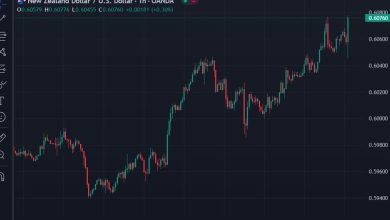Backyard Insect May Hold the Secret to Invisibility Cloak Technology

- Leafhoppers are the only species to secrete brochosomes: rare nanoparticles with invisibility properties.
- But for the first time, a group of scientists has created their own synthetic brochosomes.
- They hope their brochosomes will one day be used for invisible cloaking devices and other technologies.
We tend to think of invisibility cloaks as science fiction. But a group of scientists has taken a big step toward making it a reality.
For the first time, scientists at Pennsylvania State University have created synthetic replicas of brochosomes, naturally occurring nanoparticles that could one day be used to make invisibility cloaking devices.
Invisibility cloaking is not the only application of synthetic brochosomes. In the coming years, they could find their way into a range of commercial applications, from solar power to pharmaceuticals, according to lead researcher Tak Sing Wong, a professor of mechanical engineering and biomedical engineering at Penn State.
Solving a 70-year-old geometric mystery
Leafhoppers secrete and coat themselves in brochosomes, probably to help them blend into their surroundings. But scientists don’t really know why they produce these nanoparticles. Lin Wang and Tak-Sing Wong
Brochosomes are hollow, ball-shaped nanoparticles covered in holes – called through-holes – that pass completely through them. This complex structure allows them to absorb or scatter certain wavelengths of light, depending on the size of the brochosome and its holes.
The only place in the world you can find natural brochosomes is on the back of a leafhopper, a common insect in gardens. Their brochosomal coats were first discovered in the 1950s, and they likely help them blend in with their surroundings.
Scientists are not sure why leafhoppers secrete and become covered in brochosomes. Until now, they didn’t even understand the purpose of the complex geometry of nanoparticles.
“This is really the first study to understand how the complex geometry of the brochosome interacts with light,” Wong said.
To achieve this understanding, Wong and his colleagues had to figure out how to make a replica of a brochosome. After nearly a decade of research, they successfully 3D printed the world’s first synthetic brochosomes.
The invisibility properties of brochosomes
Brochosomes are hollow, ball-shaped nanoparticles covered with through-holes. Their complex geometry allows them to interact with light in unique ways. Lin Wang and Tak-Sing Wong
There are two important elements in the geometry of brochosomes: the diameter of the particle and the diameter of its through holes.
If the wavelength of the light is equal to the diameter of the brochosomes, it will be scattered in all directions when it hits the particle. But if the wavelength of the light is the same length as the diameter of the through holes of the brochosomes, it will pass through the particle and be absorbed by it.
This absorption combined with light scattering means that brochosomes have very limited light reflection and may be invisible over certain electromagnetic ranges. Covering an object in it could, in theory, function as an invisibility cloak.
The beauty of synthetic brochosomes is that they can be made in different sizes and therefore tailored to absorb and radiate different wavelengths across the electromagnetic spectrum. This means engineers can customize brochosomes for specific functions, such as invisibility from infrared radiation to help with military defense.
In fact, Wong’s brochosomes are the perfect size for this. They are approximately 40 to 50 times larger than those of natural origin and interact only with infrared radiation. Wong’s future research will focus in part on making smaller synthetic brochosomes to target the shorter end of the electromagnetic spectrum.
The commercial potential of brochosomes
Within three to five years, brochosomes could find their place in various markets, such as solar energy production. A coating of brochosomes could help solar panels absorb more light. Yaorusheng/Getty Images
Although Wong’s synthetic brochosomes mark a major step toward invisibility cloaking technology, scientists are still far from bringing anything to market.
“I think in my lifetime it’s possible,” said Hao Xin, a professor of electrical, computer and physics engineering at the University of Arizona, who was not involved in the study. It will take at least 50 years, he said.
But in just three to five years, Wong hopes to produce brochosomes on a large enough scale to use them in pigments, pharmaceuticals and solar panels.
For example, titanium oxide, a white pigment used in many products from candy to sunscreen, was recently banned as a food additive by the European Union. Wong thinks brochosomes could eventually replace titanium oxide in foods like candy and coffee creamers.
“Depending on our imagination, I think many interesting applications can arise from brochosomes,” Wong said.
businessinsider





